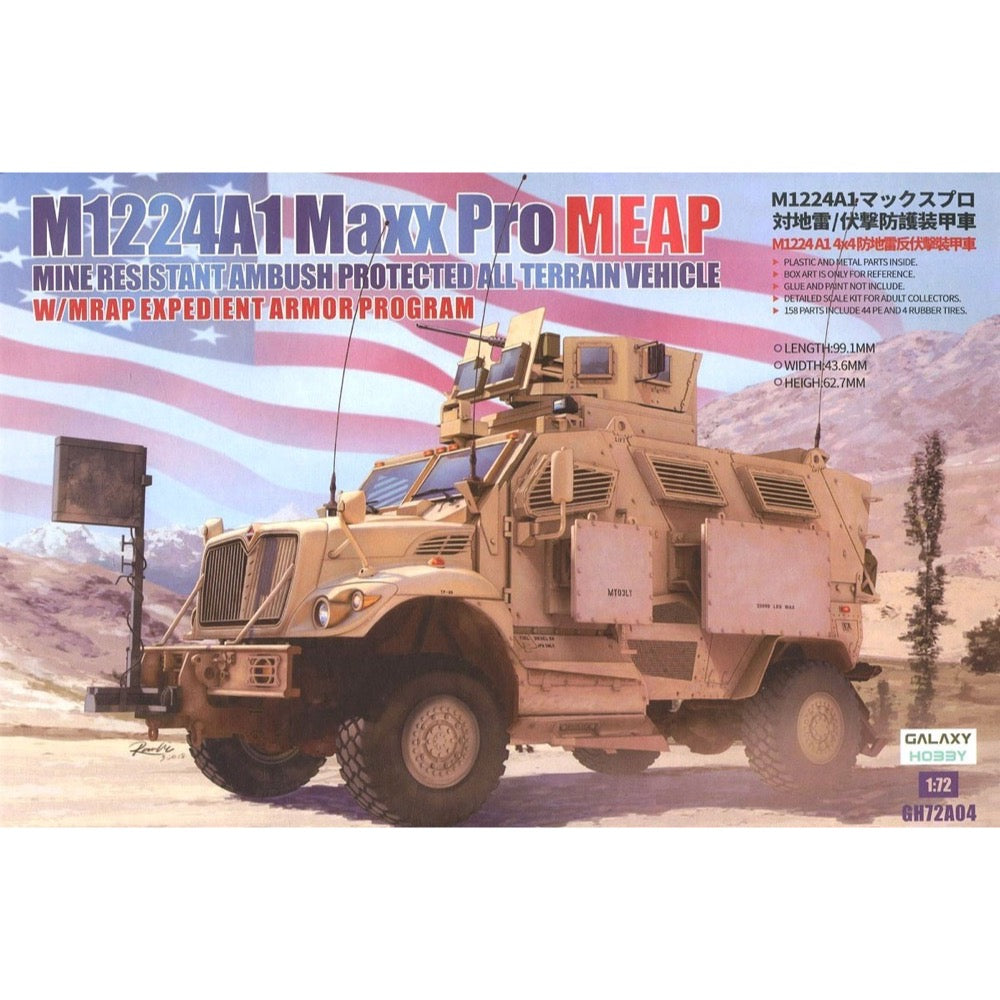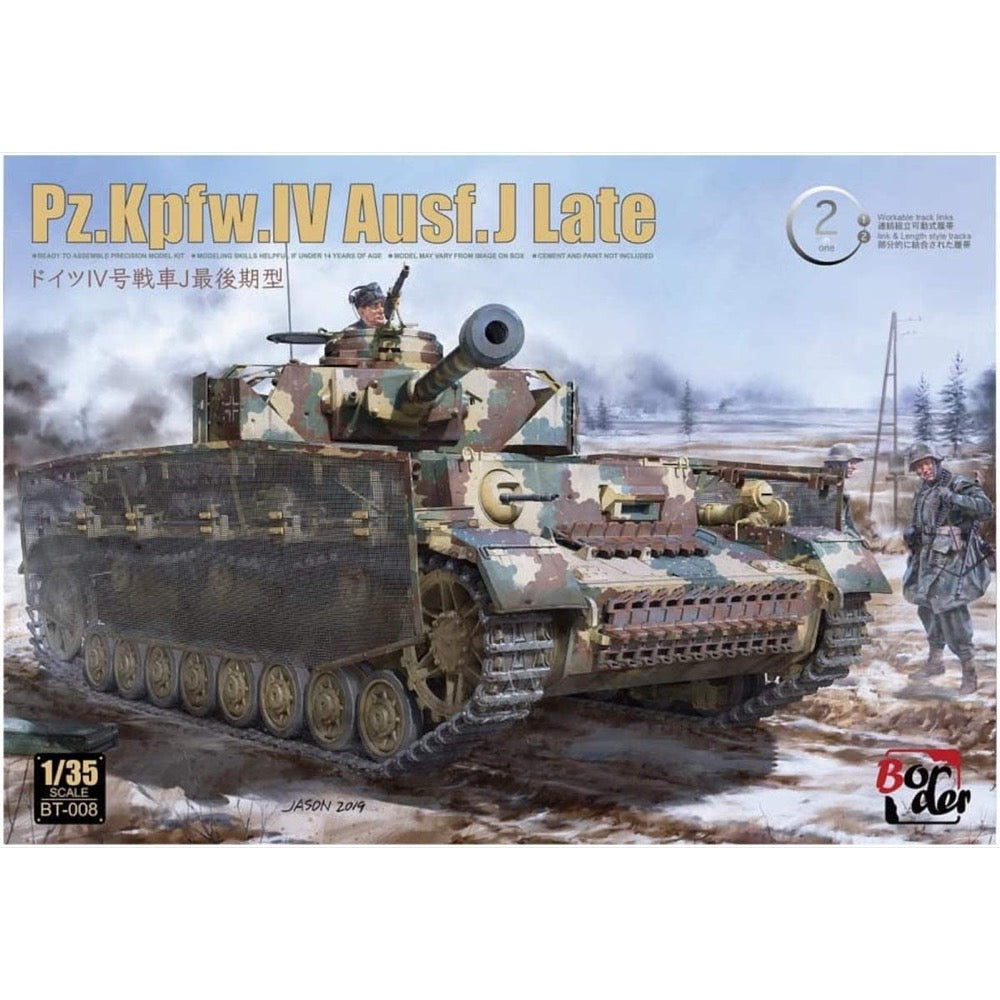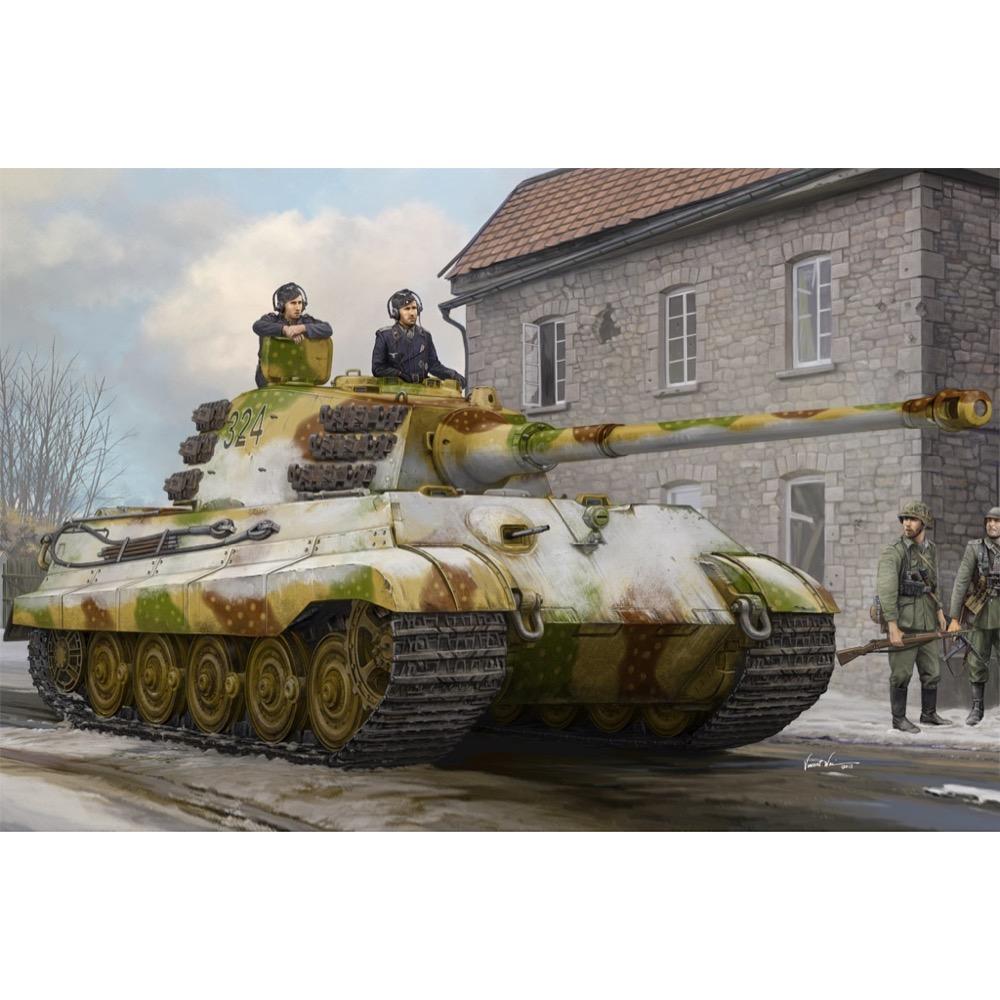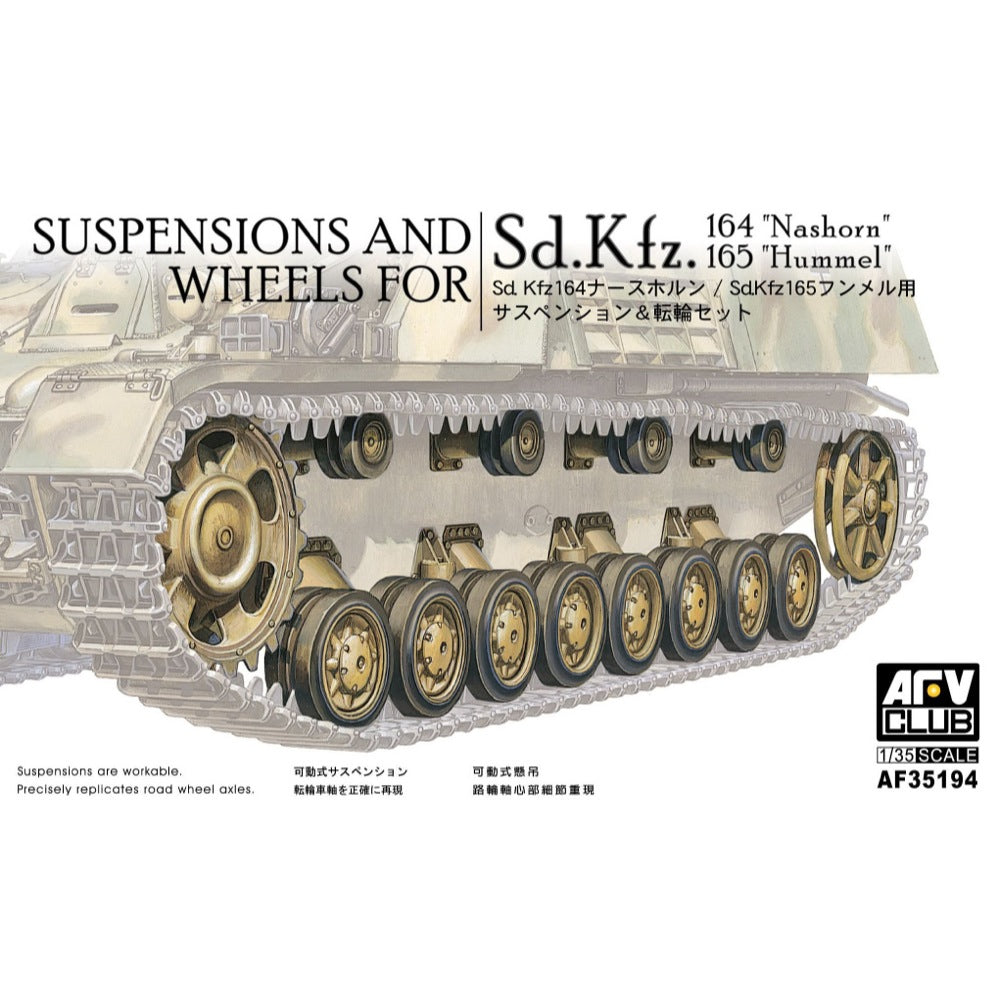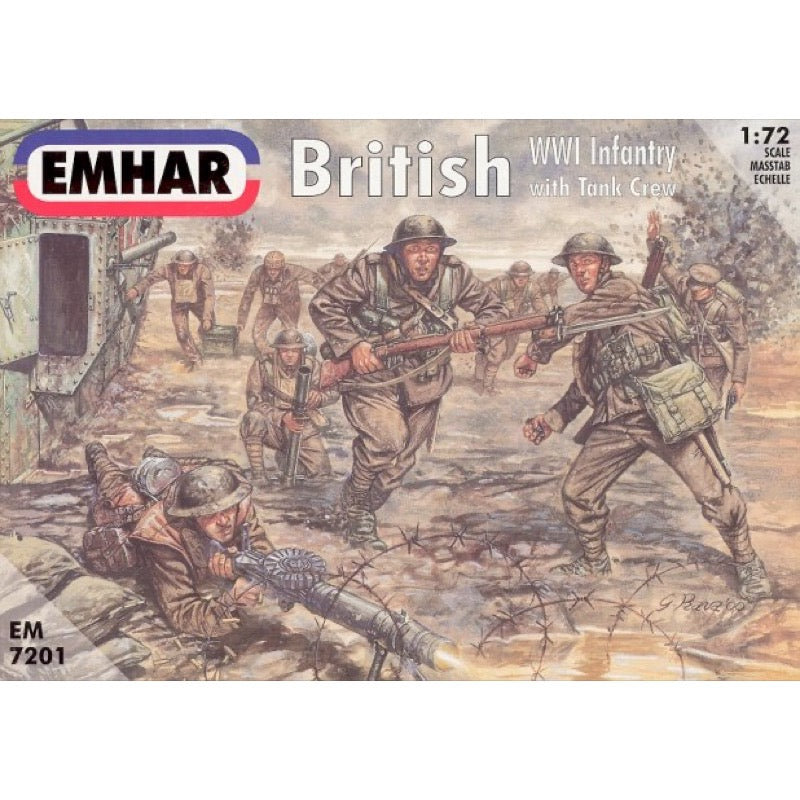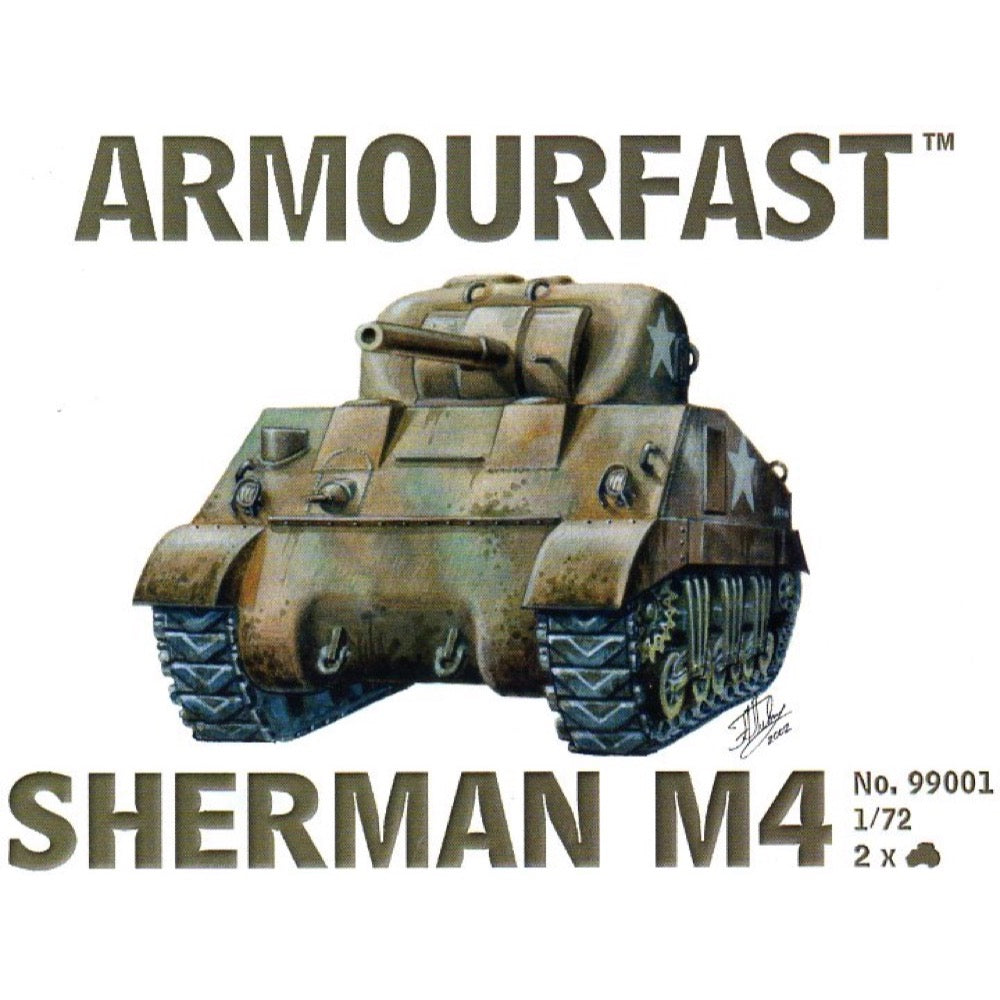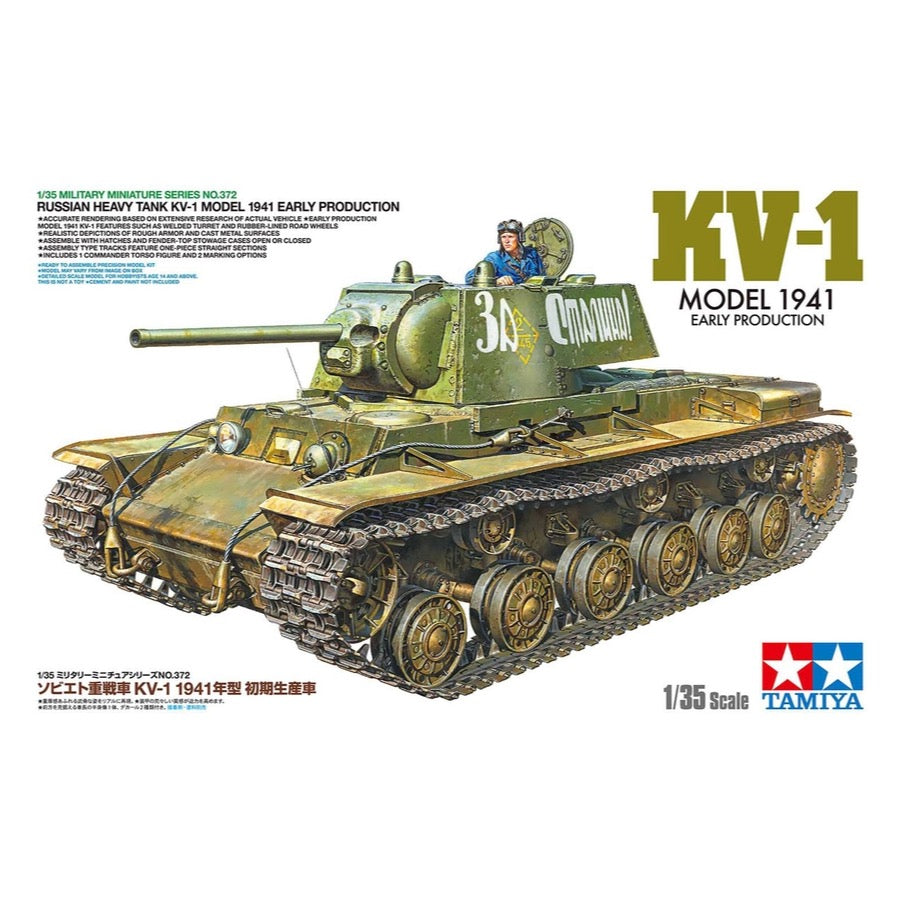
Tamiya 35372 1/35 KV-1 Russian Heavy Tank 1941 Early Production
A Weighty Adversary
The Soviet KV-1 was officially adopted in 1939 and went through a number of variants. Model 1941 KV-1s employed the 76.2mm ZIS-5 gun, which could tear through the armor on contemporary German tanks; its early production variants had a welded turret with armor up to 75mm thick, and hung tough in fierce fighting with German armor following the Nazi German invasion of the Soviet Union in June 1941, contributing to the Soviet resistance that would eventually turn the tables and push back the German advance.
Soldiers were modelers, too?
It is said that German front line troops were provided with wooden and paper models of the KV-1 in a scale of around 1/20, to help identify the tanks and formulate counter-strategies. This kit includes a version in miniature 1/35 scale on the painting guide to cut out and use in dioramas of tactical meetings and the like.
- The bulky KV-1, which helped in the Soviet defense against the feared Wehrmacht war machine, is captured in detailed 1/35.
- The latest 3D modeling techniques were used to ensure a highly detailed finish with rough cast textures and weld lines.
- A commander torso figure is included, depicted in uniform typical of the 1941-2 years. Goggles use clear components.
- The model's wide tracks have realistic depiction of upper run 'sag.' Early production road wheels are recreated.
- A separate part is used to capture the driving compartment applique armor. Lenses on the lights are clear parts.
- Hatches and fender-top stowage cases can be assembled open or closed, making this model adaptable to any scene you can imagine.
- Length: 198mm.
This model kit recreates a WWII Soviet subject. Its considered an important design in the history of armor, as it was developed concurrently with the T-34 medium tank. Armed with a powerful 76.2mm ZIS-5 gun and continually updated to improve its survivability, it served through to the end of WWII.
Features
- 1/35 scale plastic model assembly kit.
- Early 1941 model is depicted.
- Completely new design, with no parts brought over from previous kits.
- Early 1941 features such as welded turret and early production road wheels are accurately rendered.
- Surface textures such as the rough Soviet steel plate and cast areas reproduced with weld lines also depicted.
- Driver and gearbox hatches, plus fender-top stowage cases can be assembled open or closed.
- Simple turret ring construction.
- Assembly type tracks feature one-piece straight sections and recreate upper run.
- Comes with two marking options and a single commander torso figure.
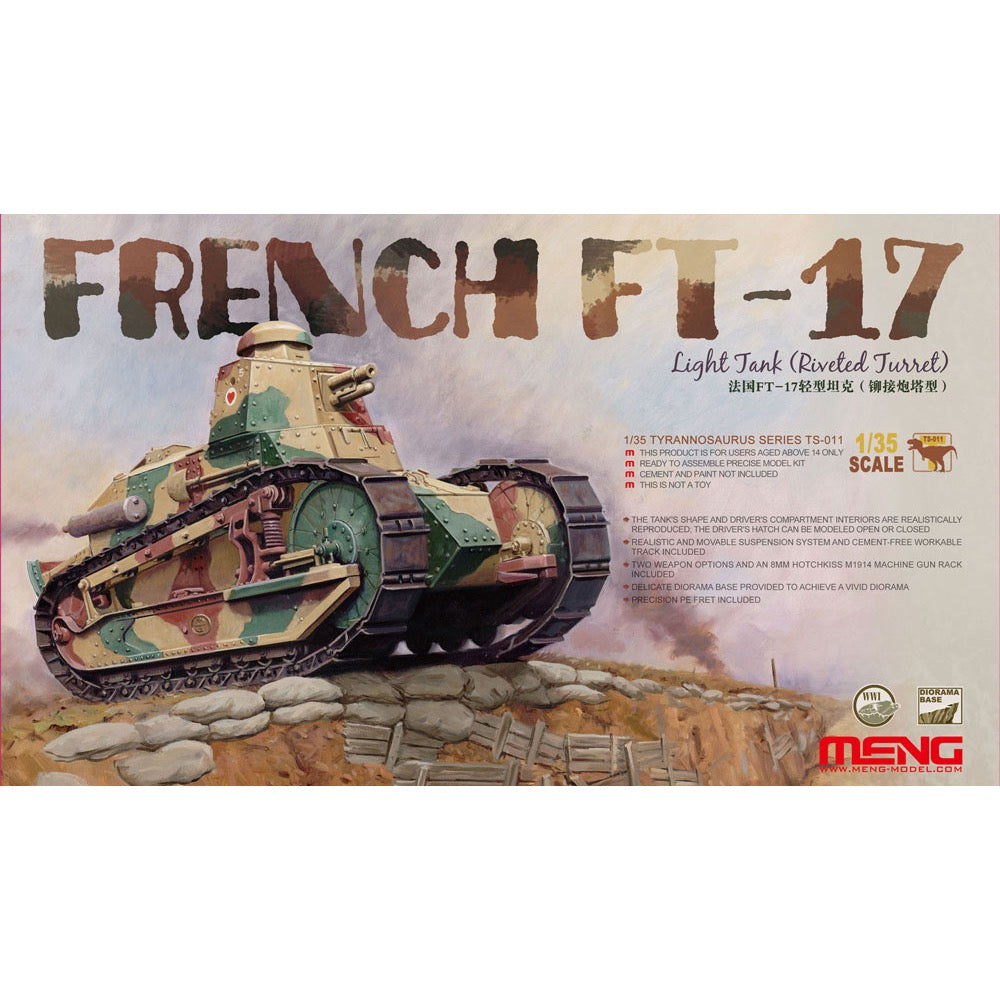
Meng TS-011 1/35 French FT-17 Riveted Turret
French FT-17 Light Tank (Riveted Turret)
The FT-17 Light tank was developed by French during WWI, Its revolutionary configuration - crew compartment at the front, separate engine compartment at the back, drive sprocket at the back, idler wheel at the front, a rotating turret at the front central, full-view commander compartment – has become and remained the standard tank layout. The octagonal riveted turret replaced the conical cast turret in the early stage of mass production, which was simpler to mass produce than the early cast turret. What’s more, the early turret was too small to allow any guns to be mounted in.
French FT-17 Light Tank with a riveted turret could accommodate a crew of 2. It was armed with an 8mm Hotchkiss M1914 machine gun or a 37mm Puteaux SA18 gun. Over 4100 FT-17s were built in France, and they were widely used in many countries around the world (27 countries confirmed). In the strict sense, the FT-17 was the first real tank in the world. It played a vital role in the history of tank development.
This 1/35 scale French FT-17 Light Tank (Riveted Turret) plastic model kit faithfully represents the vehicle’ shape and driver’s compartment interior. Driver’s hatch can be assembled in the open or closed position; the movable suspension system is molded perfectly, and the weight-bearing parts are sturdy; cement-free workable track links are easy to assemble; two weapon options and a precise PE fret are provided; a delicate diorama base is provided to achieve a vivid diorama; two paint schemes are offered.
Length: 142mm Width:51mm
Features
- The Model Is Provided With A Diorama Base. What A Beautiful Match!
- This Is A Precise Model Of The Earliest Modern Tank. Its Running Gear Is Precision And Delicate.
- Driver’s Hatch Can Be Assembled Open Or Closed.
- Octagon Riveted Turret Is Replicated Realistically.
- Workable Cement-Free Tracks Are Easy To Assemble.
- The Unditching Tail Is Well Detailed. Wrinkles On The Tarp Makes The Vehicle Look More Realistic.
- Riveted Details Are Apparent. Rivets On All Armor Surfaces Are Replicated As Per Real Ones.
- The Diorama Base Is Small And Exquisite. Unique Bars And Sandbags Are Can Be Collocated At Random.
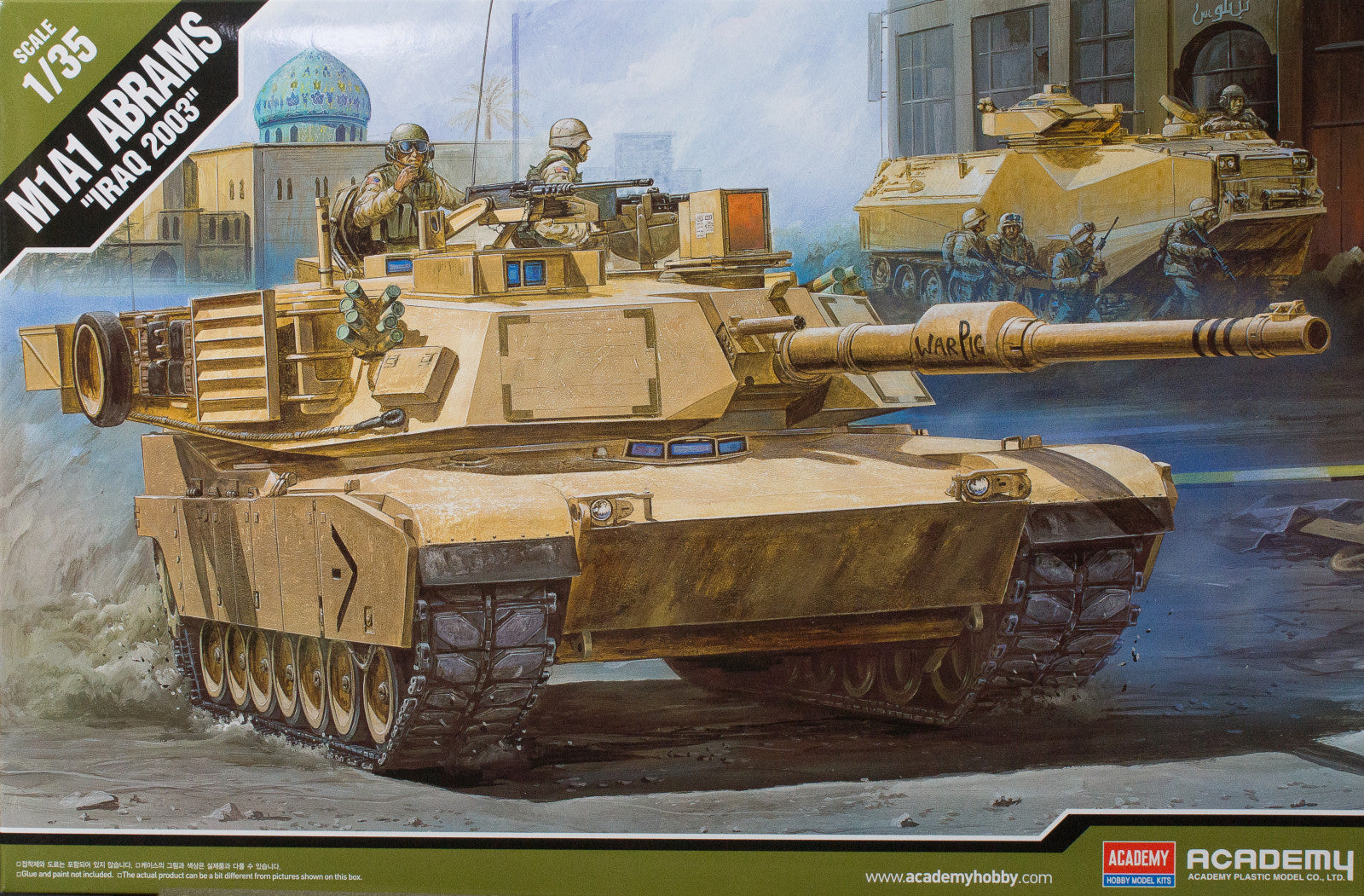
Academy 13202 1/35 M1A1 Abrams Iraq 2003 (Australian Decals)
The M1 Abrams is a modern, third-generation American main battle tank. The first prototypes of the vehicle were created in the 1970s, and serial production began in 1979 and continues to this day. To date (2018), approximately 10,500 tanks of this type have been produced. The M1 Abrams is powered by a 1,500 hp Avco Lycoming AGT-1500C turboshaft (turbine) engine. The vehicle's armament in the M1 version is the 105 mm M68A1 tank gun, and in the M1A1 and later versions - the 120 mm M256 tank gun. Additional armament consists of 1 .50 inch machine gun and 2 M240 7.62 mm machine guns.
This is an injection-plastic military vehicle model kit.
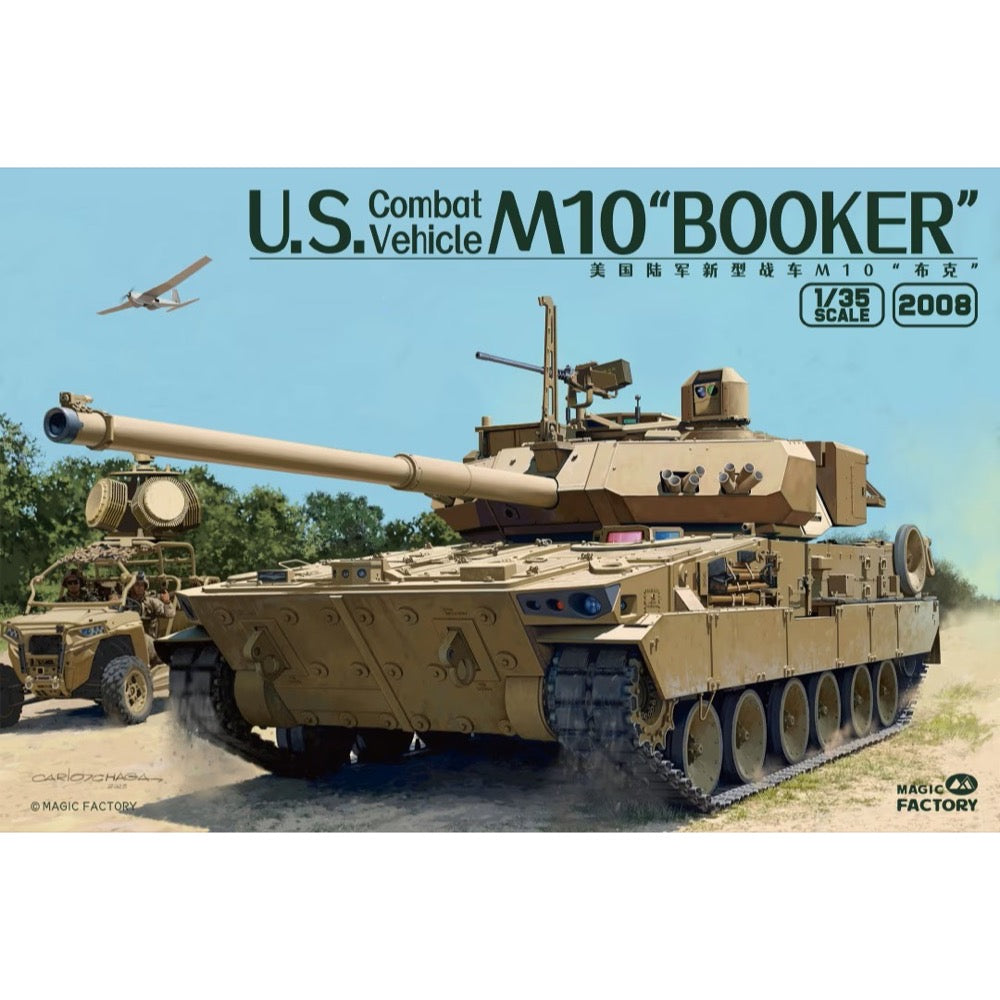
Magic Factory 2008 1/35 U.S. Combat Vehicle M10 Booker
Magic Factory 1/35 U.S. Army M10 Booker Combat Vehicle Plastic Model
In 2015, U.S Army started MPF program (Mobile Protected Firepower) for providing supporting fire for the Infantry in combat. In June 2022, GDLS won the Mobile Protected Firepower program competition and was awarded a contract worth up to $1.14 billion. The U.S. Army unveiled its new M10 Booker combat vehicle during a celebration of the service's 248th birthday on Saturday in Virginia. The combat vehicle's name from who served the nation selflessly during times of great conflict—Medal of Honor recipient Pvt. Robert D. Booker, who perished in World War II; and Distinguished Service Cross recipient Staf f Sgt. Stevon A. Booker, who died from injuries sustained in Operation Iraqi Freedom.
The design of the M10 Booker is conventional with the driver and engine at the front and the turret located at the rear of the hull. The turret accommodates a crew of three including a commander, gunner, and loader and it is to weigh about 42 tons. The main armament of the M10 Booker consists of one 105mm cannon based on the American M35 and a 7.62mm machine gun mounted coaxially. The M10 Booker is powered by a MTU diesel engine developing 800 hp and Allison transmission system, offering a superb power-to-weight ratio and hydro-pneumatic suspension. M10 Booker uses the M1A2 Sep V3 fire control system and CITV (Commander's Independent Thermal Viewer), M10 Booker is equipped with the Safran Optics 1‘s PASEO Commander’s Independent Tactical Viewer (CITV) long-range panoramic targeting sight. It increases the situational awareness capabilities of armored and surveillance vehicles in all combat scenarios (stationary and on-the-move) even at high speeds.
The Army is projected to buy 504 M10 Bookers by 2035. The vehicles will be used to establish armored battalions in light infantry divisions and brigades that otherwise have no armored vehicles. After the 82nd Airborne, other candidate units include the 10th Mountain Division, 11th Airborne Division, 25th Infantry Division, 29th Infantry Division, and 173rd Airborne Brigade. A brigade might receive between 15 and 20 Bookers, while a division could receive up to 45-60.
Features
- This is a plastic model that requires assembly and painting. Adhesives, tools, and paints are sold separately.
- 1/35 scale unpainted assembly plastic kit
- The tracks are movable and can be assembled.
- Includes 4 types of painting instructions (one of which features a commemorative paint scheme inspired by the WWII M10 tank destroyer 'Wolverine')
- The suspension is movable, allowing for height adjustment during installation
- Main hatches can be opened or closed as per choice
- Some towing shackles/tow bars are movable, allowing for scenes of interaction with other vehicles to be recreated
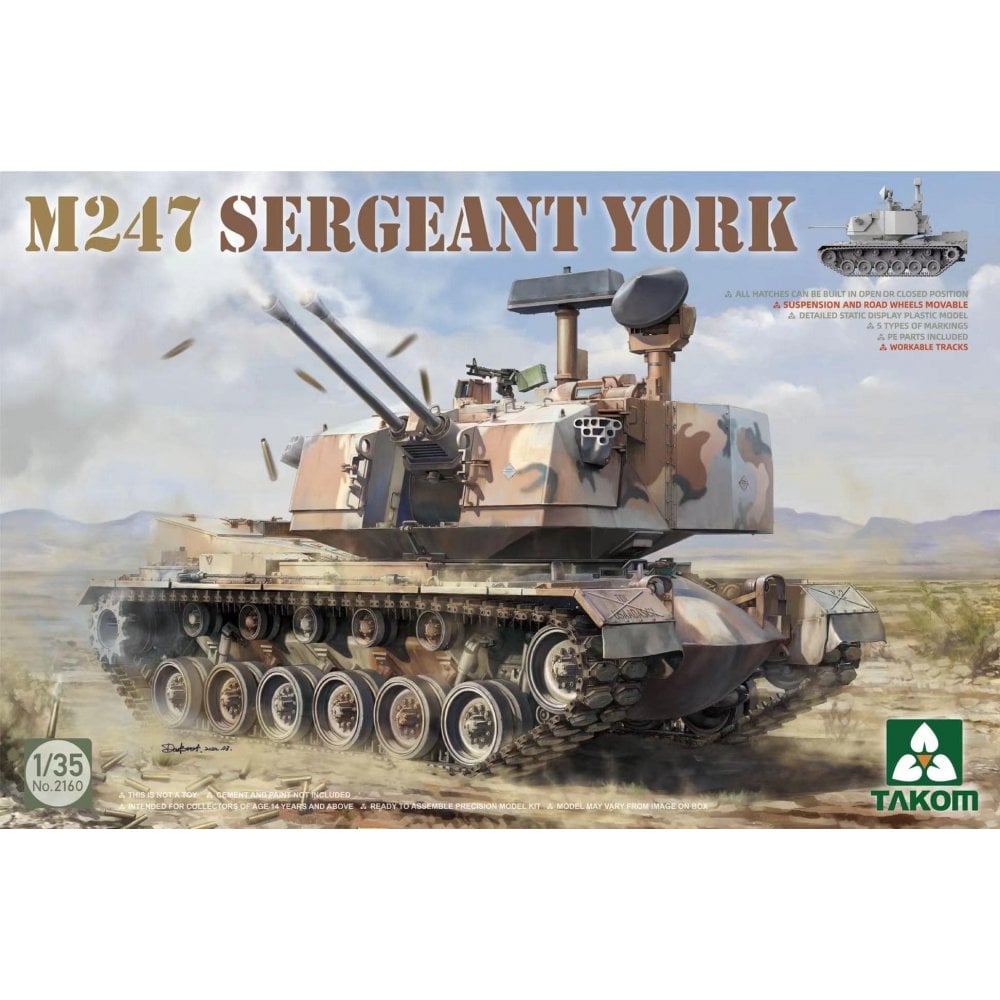
Takom 2160 1/35 M247 Sergeant York
The M247 Sergeant York is a self-propelled anti-aircraft gun that began development in the late 1970s as a replacement for the M163 self-propelled anti-aircraft gun in the United States. In 1973, the U.S. Army witnessed the success of the Soviet ZSU-23-4 Shilka in the Fourth Middle East War, and research on a new anti-aircraft tank under the name of DIVAD (Division Air Defense) was begun in 1977. In response to the request of the U.S. Army, several companies, including Ford Aerospace, submitted a basic plan for DIVAD using the M48A3 tank for the body; finally, the U.S. Army proposed prototypes be built from General Dynamics's and Ford Aerospace's submissions. After testing both prototypes, the U.S. Army adopted the Ford Aerospace prototype vehicle under the formal designation of M247 and gave it the nickname "Sergeant York." After that, the M247 continued to be tested, but in the 1990s, when the need for an anti-aircraft tank was questioned within the U.S. Army, even though nearly 50 M247s had been completed, it was never deployed.
This model kit from Takom features main hatches that can be built opened or closed; the suspension and rolling wheels are movable. The tracks are connected and movable; photo-etched parts and decals for five versions are included.
Features
- 5 marking variants
- workable single track links
- working suspension
- photo-etched parts
- Hatches can be shown open or closed


